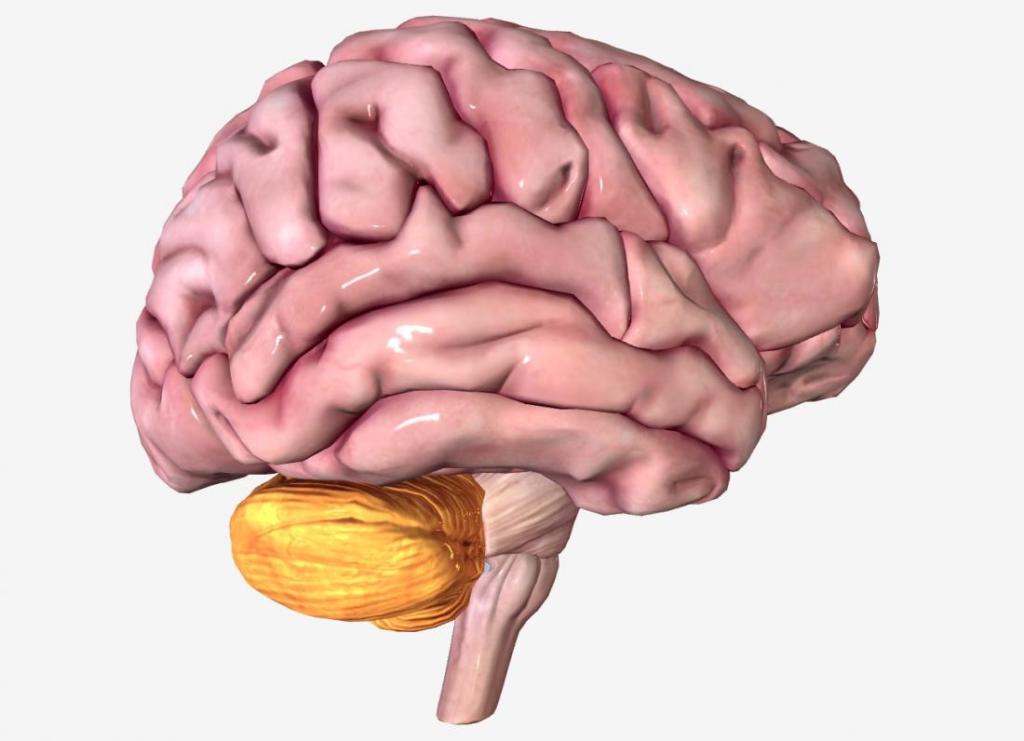
*Music boosts your IQ and EQ. Try my favorite music while reading the article.
*Overall information:

-Located between the brainstem and the cerebrum.
-Has folia (an outer gray matter of cerebellum) which helps increase surface area of the cerebellum.
-Contains the most neurons in the brain.
-Receives information from the cerebrum, inner ears, proprioceptor.
-The cerebellum is responsible for:
+Maintenance of balance, posture.
+Coordination of voluntary movement.
+Muscle tone.
+Motor learning.
+Equilibrium.
*Anatomy:

-Has two major parts: cerebellar nuclei, cerebellar cortex (convoluted sheet of tissue which wraps around the cerebellar nuclei).
-If we cut across the cerebellar cortex, there will be three main divisions.
+Primary fissure separates the anterior lobe and posterior lobe.
+Posterolateral fissure separates the flocculonodular lobe.
-The cerebellum is also divided into three zones that run from medial to lateral
+The vermis: central line (trunk, neck, head).
+The intermediate: runs parallel to the vermis (receive sensory information from the upper and lower extremities).
+The hemisphere: lateral to the intermediate zone.
*Functional subdivisions of the cerebellum:
-Spinocerebellum:
+Contains vermis and intermediate zones.
+Receives information from the spinocerebellar tracts (carry proprioceptive data from our spinal cord to the cerebellum).
+Its output is sent to the rubrospinal tract (controls muscle tone and flexor muscle group), vestibulospinal tract (maintains equilibratory reflexes), and reticulospinal tract (locomotion and postural control).
-Vestibulocerebellum:
+Contains the flocculonodular lobe.
+Receives information from inner ears.
+Is involved in the vestibular system (provides the sense of balance and body position that allows rapid movement and postural maintenance)
-Cerebrocerebellum:
+Contains lateral hemispheres.
+Receives information from the cerebrum.
+Is responsible for planning, modifying, timing of movements.
*Cerebellar nuclei:

-All outputs from the cerebellum will come from the cerebellar nuclei:
-Fastigial nucleus:
+Receives input from the vermis as well as vestibular, proximal somatosensory, auditory, and visual information.
+Sends outputs to the vestibular nuclei and the reticular formation.
-Interposed nucleus:
+Receives inputs from the intermediate zone as well as spinal, proximal somatosensory, auditory, and visual information.
+Sends output to the red nucleus.
-Dentate nucleus:
+Receives inputs from the lateral hemisphere and information from the cerebral cortex.
+Sends output to the red nucleus and thalamus.
-Vestibular nucleus:
-Receives input from the flocculonodular lobe.
+It is where the vestibulospinal tract originates.
*Cerebellar peduncles:
-Inferior cerebellar peduncle:
+Contains afferent fibers from the medulla
-Middle cerebellar peduncle:
+Contains afferent fibers from the pontine nuclei.
-Superior cerebellar peduncle:
+Contains efferent fibers from the cerebellar nuclei.
*Cerebellar cortex:

-Is made up of three layers: molecular layer, purkinje layer, and granular layer.
-It is responsible for neutral sharpening process by receiving information from most parts of the body and our brain to make sure that the most important stimulus is taken care of and therefore, every signal that is sent out has a perfect plan for movements:
+Climbing fibers (spinal oliveri tract):
- Proprioceptive receptors will be sent to the spinal cord before passing the inferior olives and ending up at the cerebellum via the inferior cerebellar peduncle. After that, these fibers will give off axons to the cerebellar nuclei and to the purkinje cell (climbing fibers).
- Cerebellar nuclei will be stimulated and send out action potential as a result.
- Then, punknjie fibers will also be stimulated to release Gaba (inhibitory neurotransmitter) to inhibit cerebellar nuclei.
—->Make sure that the amount of motor plans for movement being shot out is not too excess or not enough.
+Mossy fibers (come from every other sensory pathways)
- These fibers will come inside the cerebellum to stimulate cerebellar nuclei and purkinje fibers.
- Mossy fibers will also come into the granular layer and stimulate granule cells and golgi cells.
- Granule cells will send axons upward to the stellate cell and basket cell to release inhibitory fibers that inhibit purkinje fibers which then send down axons to inhibit cerebellar nuclei.
- Consequently, the golgi cell will be stimulated and it has a responsibility of inhibiting the granule cells.
*Pathways associated with the cerebellum:
-Superior cerebellar peduncle:
+Efferent pathways:
- Dentate nucleus sends its axons to the contralateral red nucleus and when stimulated, axons will move down to the contralateral side into the spinal cord to control flexor muscle (rubrospinal pathway) and the thalamus before going back to the cortex (dentatothalamic pathway).
- Purkinje fibers will also send axons out the cerebellum and down to the vestibular nuclei (located in the medulla). At this point, this nuclei will stimulate connection between Cranial Nerve 6,3, and 4 (medial longitudinal fasciculus) and activate the spinal nerves that control extensor muscles (cerebello-vestibular pathway)
+Afferent pathways:
- Ventral spinocerebellar tract (takes proprioceptive information from L5 to T12)
- Rostral cerebellar tract (transmits information from the golgi tendon organs of the upper half of the body)
- Tectocerebellar tract (comes from the superior and inferior colliculus which carries both auditory and visual information to the cerebellum).
-Middle cerebellar peduncle:
+Afferent pathway:
- Cortico-ponto-cerebellar fibers: fibers carry motor plans from the cortex down to the spinal cord and activate spinal nerves.
-Inferior cerebellar peduncle:
+Afferent pathways:
- Dorsal spinocerebellar tract: picks up proprioceptive information from C8 to L2.
- Cuneocerebellar tract: picks up proprioceptive information from C1 to C8.
- Vestibulocerebellar tract: receives information from inner ears.
- Reticulocerebellar tract: receives sensory information from our whole body.
+Efferent pathways;
- Cerebellum Reticular Tract: fastigial nucleus sends information down to the reticular formation.
- Cerebello vestibular: sends information to vestibular nuclei to form medial longitudinal fasciculus (eye movement) or down to spinal cord for extensor (anti-gravity) muscle.